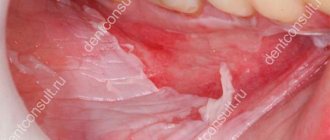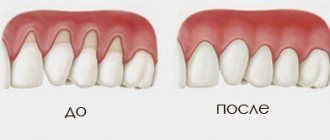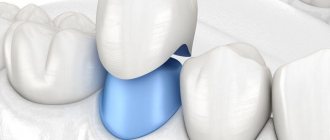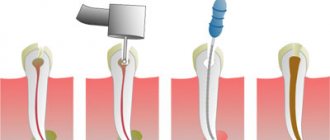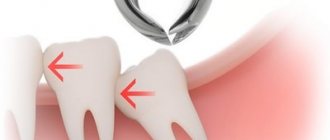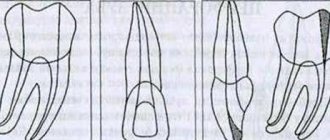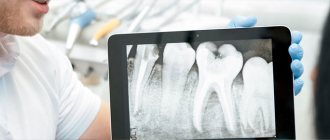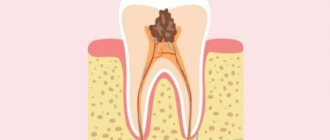Have questions?
Search for a doctor
Berezinskaya Anna Sergeevna Dentist-therapist, periodontist, doctor of the highest category Make an appointment
Vereshchaka Denis Nikolaevich Dentist-therapist, periodontist Make an appointment
Gasanova Zaira Romanovna Dentist-therapist, periodontist Make an appointment
Daurbekov Islam Isropilovich Dental surgeon, dental implantologist, periodontist Make an appointment
Zhukova Irina Petrovna Dentist-therapist, periodontist Make an appointment
Ievleva Liliya Nikolaevna Dentist-therapist, periodontist Make an appointment
Kadieva Niyat Mukailovna Dentist-therapist, periodontist. Head of the dental department at SM-Clinic on the street. Yaroslavskaya Make an appointment
Klimova Ksenia Evgenievna Dentist-therapist, periodontist Make an appointment
Kochieva Zamira Anatolyevna Dentist-therapist, periodontist Make an appointment
Martynova Elena Yurievna Dentist-therapist, periodontist, doctor of the highest medical category, Ph.D. Make an appointment
Romanova Elizaveta Aleksandrovna Dentist-therapist, periodontist Make an appointment
Rostovenko Inna Ivanovna Dentist-therapist, periodontist, dental surgeon, head of the dental department Make an appointment
Tyuryakova Natalya Aleksandrovna Dentist-therapist, periodontist Make an appointment
Tsanava Tamari Zaurievna Dentist-therapist, periodontist Make an appointment
Cherednichenko Victoria Aleksandrovna Dentist-therapist, periodontist. Head of the dental department at SM-Dentistry on the street. Yartsevskaya Make an appointment
Yurchenko Natalya Viktorovna Dentist-periodontist, dentist-orthodontist, candidate of medical sciences, head of the department of dentistry Make an appointment
In dentistry, a periodontist deals with the diagnosis, treatment and prevention of periodontal pathologies. This word refers to all those tissues and structures that surround and fix the tooth in a certain place. Thus, the periodontium includes the bone tissue of the jaws, which contains the tooth root, the ligamentous apparatus located around it, as well as the soft tissue of the gums. According to statistics, periodontal diseases today occur in approximately half of all dental patients.
When is it necessary to see a specialist?
The following symptoms should be the reason for making an appointment with a periodontist:
- bleeding from the gums during brushing your teeth, while eating, or even occurring without any apparent reason;
- purulent discharge from behind the gum edge;
- sore gums when chewing food;
- change in the shade of gum tissue or swelling;
- the appearance of bad breath;
- mobility of one or more teeth, their looseness in the socket;
- exposure of the dental neck, which leads to pathological sensitivity and pain upon contact with hot, cold, etc.;
- buildup of plaque or tartar.
Diseases treated by a periodontist
Now let’s look at what exactly a periodontist does and what he treats. People turn to this specialist primarily for problems with gums. Here are the most common pathologies within his area of expertise:
- gingivitis is an inflammation of the gums, which usually precedes any pathological process that penetrates deeper into the soft tissue. In this case, the mucous membrane turns red, swells, pain and bleeding appear,
The photo shows gingivitis - Periodontitis is a deeper and more serious inflammatory disease that leads to functional changes in the periodontium, causing severe pain, especially during meals. Bleeding becomes more intense, and in advanced stages teeth begin to loosen, which can ultimately lead to their complete loss,
The photo shows advanced periodontitis - periodontal disease - the disease itself is a non-inflammatory pathology in which degenerative processes occur in the soft tissues. The cause of the development of the disease is usually internal disorders, including those related to the functioning of the endocrine system. Gum recession is observed, the necks of the teeth are exposed, and their mobility appears. But in some cases, this term refers to an advanced stage of periodontitis, when, if left untreated, the infection penetrates deeper into the tissue and provokes even more serious structural changes.
This is what periodontal disease looks like
“Based on my life experience, I can only recommend visiting a periodontist at least once a year. All my life I have taken care of my health, brushed my teeth, and never developed caries. And then, at the age of 45, I was diagnosed with periodontal disease! Nothing hurt, my gums didn’t bleed, and the therapist didn’t notice anything. And if I had gone to a periodontist at least once, they could have noticed and slowed down the process...”
Lyudmila V.D., Nizhny Novgorod, from correspondence on the forum www.32top.ru
- root cyst - in this case, the help of a periodontist may also be required, since the pathological phenomenon leads to a pronounced weakening of the ligaments. The neoplasm usually develops without pronounced symptoms, but over time, aching pain occurs in the depths of the gums, swelling appears and the mucous membrane turns red. More often it occurs due to infection entering the tissue, which causes the formation of a cavity with fluid. In the acute stage, it can develop into periostitis, a purulent abscess, and therefore requires mandatory treatment,
- stomatitis is an infectious lesion of the oral mucosa, which is the result of the penetration of a bacterial infection into the tissue, often through wounds and minor injuries. A fungal infection can also cause the development of pathology, and in this case we will be talking about candidal stomatitis. Usually the disease manifests itself in the form of redness and soreness of the mucous membrane, itching and burning, and the formation of ulcers in the mouth.
The photo shows a fungal infection
This is not a complete list of possible pathological conditions in which one cannot do without the help of a professional periodontist - he treats completely independently or involves a therapist/surgeon to help, it all depends on the situation.
But if you discover unpleasant symptoms such as swelling of the gums, pain and bleeding, you can immediately contact a specialized specialist or a dental therapist, who, if necessary, will give the necessary referral.
What services does a periodontist provide?
At the first appointment, the specialist asks about complaints, examines the oral cavity, and assesses the health of the maxillofacial area and surrounding lymph nodes. Next, he prescribes an instrumental examination and computer diagnostics of the periodontal condition. It will include, at a minimum, x-rays of the dentition and jaw bones.
After the consultation, the periodontist will be able to talk about the identified problems and propose a treatment plan, for example, techniques such as:
- Laser treatment of periodontal diseases. In this case, the gums and identified pathological pockets near the teeth are treated with a laser. Laser radiation removes areas of inflamed tissue, sterilizes the pocket and activates healing processes.
- Vector therapy. For treatment, the Vector device is used, which acts on tissues using a combination of ultrasound and a special suspension that fills the pockets. Vector therapy allows you to quickly and painlessly remove inflammation, reduce gum bleeding, remove dental plaque and polish the surface of the roots.
- Carrying out flap surgery. It can consist of either removing excess tissue or transplanting a mucosal flap from another area. Thanks to this, the doctor fills the bone pockets that have arisen as a result of receding gums (recession) and also restores its contour.
How to make an appointment with a periodontist on the Meds.ru portal
Today in Moscow, a large number of clinics offer dental services. With such a wealth of offers, it is not so easy to find a periodontist who provides quality services at an adequate price. However, this problem does not exist for users of the Meds.ru portal.
The Meds.ru information base contains information about the best Moscow clinics and specialized specialists with a good reputation and positive patient reviews. To find a competent periodontist, you need to open the “clinics” tab on the Meds.ru main page and select the “dentistry” specialization in the column on the right. Then on the page that opens, also on the right, select “periodontist consultation” and enter the area of the capital or metro station of interest in the top control panel. After this, you will see a list of clinics that meet your requirements and are attended by a periodontist. You can make an appointment with him by filling out the feedback form on Meds.ru, or by calling the portal’s call center.
How will an appointment with a periodontist help?
Periodontitis is the most common problem in dentistry. Its main danger is the high risk of irreversible tooth loss. And not only the one around which tissue inflammation manifested itself most strongly. If you do not see a doctor in time, the inflammatory process can spread to the jaw bone. And this complication will lead to severe loosening and loss of neighboring, completely healthy teeth. Periodontists at SM-Dentistry will help prevent such an unpleasant development of the situation.
How is diagnostics carried out?
As part of the diagnosis, a visual examination of the oral cavity is first performed. Next, the doctor refers the patient to the necessary examinations. Let's look at the activities that may be required to make an accurate diagnosis:
- interviewing the patient regarding complaints, current condition, past and possible chronic diseases,
- examination of the oral cavity, search for foci of caries and inflammation, assessment of the volume of dental plaque. By palpation, that is, feeling, the doctor assesses the condition of the gums and lymph nodes,
- examination of inflamed areas - assessment of the degree of bleeding and swelling, possible signs of atrophic processes,
- cytological and microbiological analyzes of microflora,
- determining the depth of periodontal pockets - allows you to identify the stage of periodontitis (mild - up to 3.5 mm, medium - up to 4-5 mm, severe - more than 5 mm),
- X-ray examination, functional diagnostics,
- collection of blood tests if necessary.
For examination, you may need to take blood tests.
In each individual clinical case, a set of diagnostic procedures is selected individually. The periodontist must carefully examine the current condition of the oral tissues and take into account all associated factors in order to make an accurate diagnosis and prescribe the necessary treatment.
Periodontist's recommendations
The reason for the development of pathological processes in gum tissue is often associated not only with hygiene, but also with a lack of minerals and vitamins, addiction to bad habits, diseases of other organs, and injury to oral tissues.
To reduce the likelihood of periodontal damage, experts recommend:
- quit smoking and alcohol;
- treat any diseases in a timely manner;
- do not cause dental diseases;
- Healthy food;
- Periodically take vitamin and mineral complexes.
According to patient reviews, the A-Medic periodontology clinic is one of the best in Moscow. However, specialists are not magicians, and if a patient presents with advanced pathology, it should be understood that treatment will take a long time. It will not be possible to restore the periodontal condition in one visit, even with a mild degree of damage. To achieve a full recovery, the patient must be determined to regularly visit the periodontist’s office.
Treatment methods in periodontics
Drug therapy with anti-inflammatory, antibacterial, anti-sclerotic drugs in the form of therapeutic applications and intragingival injections.
Curettage of periodontal pockets - scraping of subgingival deposits using a special instrument - a curette. Taking into account the severity of the disease, it can be closed (without compromising the integrity of the gum) or open (open flap method).
Laser therapy is used for bloodless operations to excise overgrown periodontal tissues, open abscesses, and reconstructive plastic surgery.
Electrophoresis - exposure to galvanic current improves blood supply to the area, enhances tissue regeneration, and relieves inflammation; works well in combination with medications - vitamins, enzymes for breaking down plaque, anti-inflammatory drugs.
Orthopedic treatment with splinting, installation of bridges, crowns and dentures.
Remineralization of tissues – saturation of enamel with minerals necessary for its health.
In severe cases, open surgery is resorted to. A periodontist surgeon performs the following types of therapeutic and restorative procedures:
- gingivectomy – excision of marginal periodontal tissues with removal of non-viable areas; used for suturing or complete removal of periodontal pockets;
- soft tissue transplantation - replacement of lost or removed periodontal tissue with sections of mucous membranes from the palate or cheeks;
- gingivoplasty – restoration of gum level during receding, plastic surgery of the frenulum and vestibule of the oral cavity;
- regeneration of bone tissue using autologous bone grafts (fragments of one’s own bone from other parts of the body) and allografts - foreign bone structures devoid of immunogenic effects, as well as artificial materials (calcium phosphate ceramics, biositalls).
Prevention of periodontal diseases
What can cause periodontal pathology:
- bone tissue atrophy - with prolonged feeding of liquid or too soft food, teeth and gums, deprived of the necessary load, degrade;
- malocclusion - disrupt the distribution of load and lead to gum deformation;
- violation of occlusion (bite) due to an incorrectly installed filling;
- hormonal disorders;
- lack of vitamin C;
- poor oral hygiene;
- bad habits;
- immunodeficiency states.
Careful hygiene, high-quality dentistry and regular preventive examinations with professional teeth cleaning will help prevent unpleasant symptoms. To make an appointment with a periodontist, call the phone number provided or use the convenient online appointment form directly on the website.
Stages of periodontal treatment
Comprehensive treatment by a periodontist includes:
- Diagnostics, including radiography and probing.
- Professional hygiene for removing traces of tartar.
- Periodontal cleaning.
- Curettage of periodontal pockets.
- Splinting.
- Fight against inflammatory foci.
- Laser correction.
- Surgical assistance during exacerbation.
- Professional recommendations on home hygiene.
All promotions
